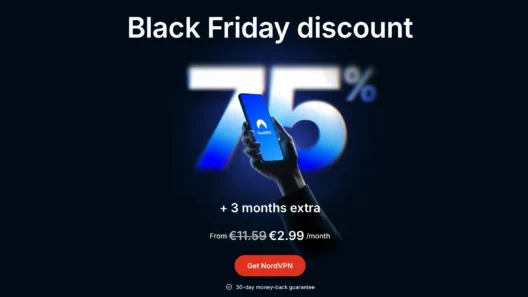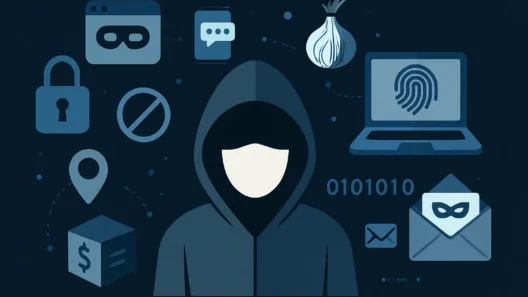I never really thought about how much personal info about me is floating around online until I started digging into what’s actually out there. Your name, phone number, address, photos, sometimes even family connections or old public records… all easily accessible. And the worst part? Anyone can use this info against you — whether for targeted ads, phishing scams, or even identity theft.
When I started this journey, I quickly realized that completely disappearing from the internet is no walk in the park. But I was pleasantly surprised by just how many ways there are to dramatically reduce your digital footprint and protect your privacy — and the best part is, you can do a lot of it for free. Here’s my detailed guide on how to do it.
1. Start by Searching Your Name on Search Engines
The first step was to find out what the internet actually knows about me. I grabbed Google, Bing, and Yahoo and searched my name in quotation marks (“Jane Doe”). This helped me find exact matches of sites where my personal info appears.
Make sure to note all the websites where your identity and data are publicly available — things like people search services, public record databases, or old forum posts. Once you know where you appear online, you can plan the next steps.
2. Find and Opt Out of Data Broker and People Search Sites
Data brokers are companies that collect and sell your info. You’ll often find yourself listed on sites like Spokeo, MyLife, Radaris, Intelius, BeenVerified, or Whitepages. And that’s just the tip of the iceberg — there are easily 80+ of these sites out there.
You can start by manually opting out on each site:
- Find your profile page on the site (sometimes you’ll need to add your city or state to get the right one).
- Verify your identity with details like your age, previous addresses, or family ties.
- Find the “opt-out” or “privacy” section and fill out their removal request form.
- Some sites require emailing, submitting a form, or even mailing or faxing a request.
Heads up: Data brokers can legally start collecting your data again after 90 days, even if you’ve opted out. So it’s important to repeat this process regularly. I recommend creating a spreadsheet and setting reminders to keep track of your opt-outs.
If manual work isn’t your thing, there are paid services that automate this recurring removal for you — but obviously, that comes with a fee.
3. Remove Your Info Directly from Google
Google has a special tool where you can request the removal of your personal info from search results. This can be your phone number, address, photos, or other sensitive details.
The process is pretty straightforward:
- Gather links to the pages showing your info.
- Take screenshots or save the URLs.
- Submit a removal request using Google’s removal tool.
- Wait for approval; sometimes they ask for extra info.
Note: You can also blur your home on Google Maps by submitting a request through the “report a problem” option on the 360° view.
You can also limit how much data Google collects about you by turning off location history, web & app activity, and YouTube history.
4. Contact Website Owners Directly to Remove Your Info
If you find a website publishing your personal info without your permission, you can email the site owner or webmaster and ask them to take it down.
Usually, a simple email explaining you did not consent to sharing this info and requesting removal works well. Once the info is removed from the source, it disappears from all search engines eventually.
5. Erase or Limit Data in Public Records
Some data comes from official sources like court records or DMV files. These can be harder to remove, but depending on where you live, you may be able to request sealing or removal of sensitive info.
This often takes weeks or months. You’ll need to contact local courts or agencies and follow their procedures.
6. Delete or Set Your Social Media Accounts to Private
Social networks are huge repositories of your personal info, often publicly accessible. If you’re not ready to delete your accounts, at least make your profiles private:
- Limit profile visibility to friends only.
- Disable personalized ads and tracking.
- Hide location data.
- Remove sensitive info from your profile.
7. Delete Unused Online Accounts
Most of us have accounts on sites we no longer use — old shops, forums, gaming platforms. Those accounts often still share your info.
You can hunt down these accounts by searching your email inbox for keywords like “welcome,” “account,” or “registration.” Then manually delete any accounts you don’t want.
Also, check sites like Have I Been Pwned to see if your emails have appeared in data breaches.
8. Unsubscribe from Marketing Lists
Many marketing databases hold your info and send you junk mail or emails.
Tools like DMAchoice and AdChoices let you bulk opt-out from many marketing lists at once, which is super handy.
9. Remove Personal Data from AI Training Models
Here’s a wild one: some AI systems use your chat logs or activity for training, which means your personal info could live on in AI models.
For example, ChatGPT allows you to request data removal and opt out of training with your data.
Facebook lets you disable “off Facebook activity” tracking to stop your data feeding AI models like Llama.
Google’s Bard (Gemini) also lets you delete activity and turn off data logging.
10. Limit Data Collection on Your Phone
Phones gather a ton of info about us. It’s worth reviewing app permissions:
- On iPhone, go to Settings > Privacy & Security and revoke permissions apps don’t need.
- On Android, check Settings > Security and Privacy > Permission Manager for location, microphone, camera access.
Pro tip: turn off Bluetooth when you’re not using it to avoid being tracked via nearby devices.
11. Clear Personal Info from Your Browsers
Browsers store lots of data — passwords, history, cookies — which can be risky if someone hacks your device.
Tips:
- Block third-party cookies.
- Enable strict tracking protection.
- Regularly clear browsing history and cache.
- Review and remove unnecessary extensions that request too many permissions.
12. Delete Unused Apps from Your Phone
Unused apps can still collect data in the background.
Periodically review your apps and delete the ones you no longer use. On iPhone and Android, you can sort apps by last used date.
Before deleting, check if the app allows you to delete your account and data, or you might have to contact developers.
13. Limit Data Sharing on Smart Devices
Smart TVs, speakers, and other devices also gather data on your habits.
Check their privacy settings to delete stored recordings or usage history.
For Alexa or Google Home, you can erase voice recordings and enable automatic deletion for future data.
In Conclusion
Removing your personal data from the internet isn’t a one-time task — it’s an ongoing process. Putting in the effort to find where you’re visible, contacting webmasters, tweaking Google and social media settings, and managing your apps and devices can drastically improve your privacy.
My advice? Start as soon as possible, keep track of your progress, and if you want peace of mind, consider automated services that do the hard work for you.
Frequently Asked Questions
How can I remove my personal information from the internet for free?
You can manually opt out from data broker sites, request removal from search engines like Google, contact website owners directly, delete unused social media and online accounts, and adjust privacy settings on your devices—all without paying a fee.
What are data brokers and why should I opt out from them?
Data brokers collect and sell your personal information online, often without your consent. Opting out prevents these sites from displaying your sensitive data publicly, helping protect your privacy and reduce risks like identity theft.
Is it possible to completely delete all my personal data from the internet?
Achieving 100% deletion is very difficult because some data is stored in public records or shared widely. However, you can significantly reduce your digital footprint by following removal steps and regularly updating your privacy settings.
How often do I need to repeat data removal requests from data brokers?
Data brokers can legally collect your data again after about 90 days. To keep your information off these sites, you should repeat opt-out requests every three months or consider automated removal services.
Can I remove my data from AI training models like ChatGPT?
Yes, some AI providers allow you to request deletion of your personal data and opt out of using your data for model training. For example, ChatGPT offers privacy settings to remove chat logs and disable training on your data.














